12
Using 3D Warehouse and Extension Warehouse
A great functionality of SketchUp is the ability to use assets created by others right inside your model. The only downside here can be finding those assets! This is exactly why the SketchUp team maintains the warehouses. These online repositories will allow you to search for 3D models for use in your project or to find new extensions to help make a more efficient workflow.
In this chapter, we will look at the following:
- Understanding the two warehouses
- Logging into the warehouses
- Searching Extension Warehouse
- Finding things in 3D Warehouse
- Using 3D Warehouse models
There is a lot to cover in this chapter, so let’s dive right in!
Technical requirements
For this chapter, you will need SketchUp Pro and access to the internet with a supported web browser (Google Chrome, Firefox, Safari, or Microsoft Edge).
Understanding the two warehouses
Before we can get into any specifics on how these sites work, let’s spend a little bit of time understanding what purpose they offer and how to access them. In this chapter, we will specifically be talking about these two websites:
- Extension Warehouse (https://extensions.sketchup.com)
- 3D Warehouse (https://3dwarehouse.sketchup.com)
Both of these sites are owned and operated by Trimble and are available to everyone to view. While there are some similarities in the look and feel of these pages, they both serve very different functions. Let’s dive into the purpose that each serves and take a look at how they are maintained, as well as specific uses that they may provide for you in your effort to level up your SketchUp game.
Extension Warehouse
We spent a whole chapter talking about extensions in Chapter 11, What Are Extensions?, so we probably do not need to get into the nitty-gritty about the purpose of extensions here. The important thing to know is why Extension Warehouse exists.
When the concept of extensions was introduced, people started creating their own extensions. After a very short amount of time, they started sharing them with each other. A little while after that, sites started popping up specifically for sharing these newly created extensions. While it was great to get to see a community being created and the sharing of things that people had made, there was a bit of a concern that there was not an “official” place to get these extensions.
This was the basic idea behind the creation of the Extension Warehouse. This could be a place where extensions that were on some level and “approved” by SketchUp staff could be made available to all SketchUp users. When SketchUp Pro 2013 was released, the first version of Extension Warehouse was released alongside it:
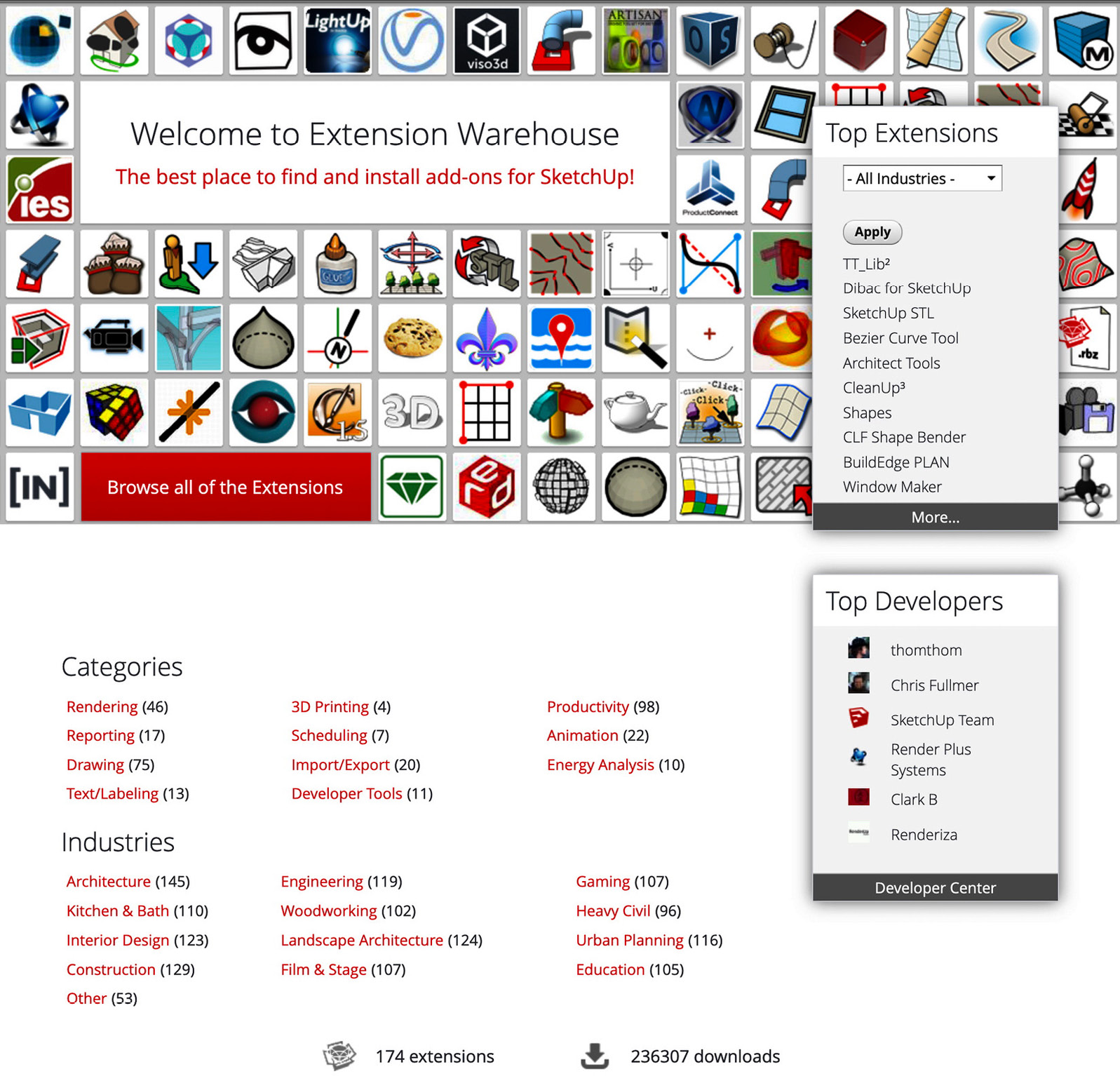
Figure 12.1 – Extension Warehouse from 2013
This was a great service for SketchUp users! Before Extension Warehouse, users had to know someone who knew someone to get an extension. Now, users did not need to find a creator of a specific extension on a forum to get their extension. They could just pull up and search a list of extensions on one page.
Extension Warehouse did something else for users; it provided peace of mind when downloading third-party software onto their computers. I have not heard many stories of malware introduced to anyone’s computer by use of extensions, but I have heard (and experienced) issues with extensions that conflicted with each other. I have also experienced extensions that simply did not work once they were installed or did not work on my version of SketchUp Pro. Extension Warehouse was intended to address these issues. Every extension listed on Extension Warehouse was going to be reviewed by SketchUp team members to make sure that there were no issues like those I mentioned.
Now, this did not mean that every extension was exhaustively tested and verified to do exactly what the author said and never had any errors, but it was safe to download and install in SketchUp Pro. This offering was very well received by SketchUp users, and Extension Warehouse has grown over the past decade to include advanced search and listing capabilities and is now home to hundreds of extensions that people discover and download daily:
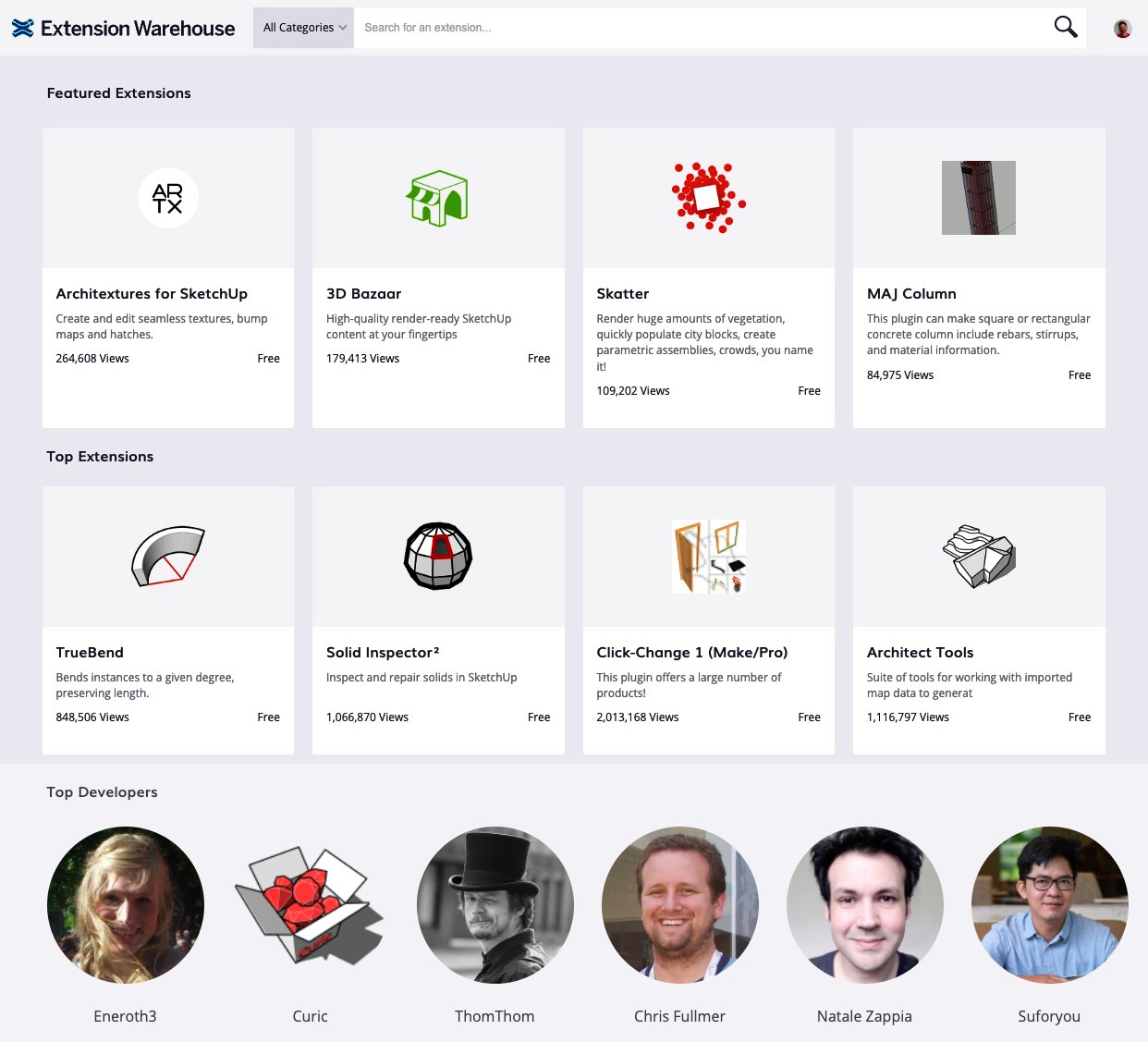
Figure 12.2 – Extension Warehouse as it exists today
Extension Warehouse is not the only place to get extensions for SketchUp, but it is still the only place to get extensions that have been reviewed by SketchUp staff and assured of installation without issue.
3D Warehouse
3D Warehouse is an online repository of SketchUp models created by users and product manufacturers all over the world. 3D Warehouse is an amazing place to discover models that can be placed into your SketchUp file or to share your creation with millions of other SketchUp users.
When first introduced (back when Google owned SketchUp), the intention was to use it as a place to store buildings created by users. It started as a fairly basic list of SketchUp files with thumbnails and a simple search function. Over the years, 3D Warehouse has grown in capability and content!
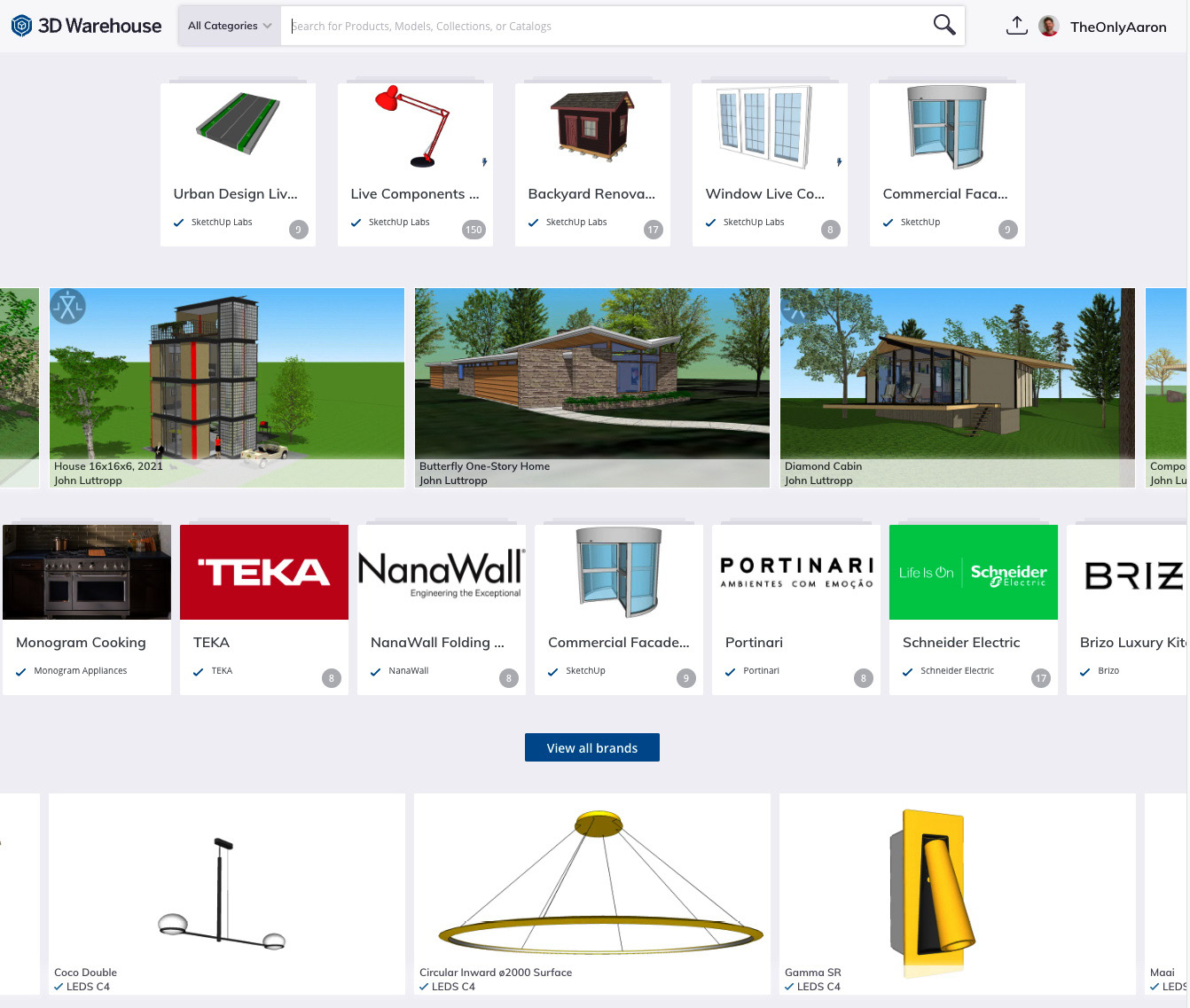
Figure 12.3 – Today’s 3D Warehouse
The 3D Warehouse of today has a very detailed search capability and hosts millions of files. While a majority of the files hosted are from users, 3D Warehouse also contains a growing number of 3D models uploaded by product manufacturers. In some cases, these files are the exact files that are used in manufacturing!
Additionally, every single model on 3D Warehouse can be downloaded in the SketchUp file format for the last three versions of SketchUp, as well as in the Collada or GLB file format, regardless of what version the model was created in. Not only that but models can also be viewed in 3D from a mobile device directly from 3D Warehouse! This site has really grown and changed since its introduction all those years ago!
There is a lot that can be done with the warehouses, and we will be covering how and when to use each and the best way to navigate all that they have inside them. Before that though, we should talk about what you need to do to get access to their contents, and that means creating an account and logging in.
Logging into the warehouses
A few years back, there was a change to the warehouses – a user is now required to have an account and log in before downloading anything from either platform. You can still go to either warehouse, and browse without having to log in, but before you can download anything, you must log in with a valid account.
I know there are those out there that bemoan having to go through the process of logging into things or having to create accounts in order to get access to websites, but these people are missing the bigger picture. By logging into a warehouse, you are allowing it to know who you are and asking it to keep track of what you are doing. By having the warehouse remember which extensions you have downloaded, for example, you don’t have to bookmark or remember them if you need to come back later and look at the listing page; Extension Warehouse already knows and remembers. Even better, Extension Warehouse will present you with a list of your extensions with a single click!
And 3D Warehouse will make your life even better, allowing you to upload and store private files and create and maintain your own folders with a model that you have found. This means you can peruse 3D Warehouse, and when you come across a file that you may want to use one day, you can simply mark it and “save it for later” without actually having to download and save anything!
We will cover the details of using this functionality in both warehouses in the Searching Extension Warehouse and Finding things in 3D Warehouse sections of this chapter. Right now, we need to cover the process of getting logged in.
Sign in options
When you first try to sign into either warehouse (or SketchUp for that matter), you have the option to sign in using your Trimble ID or using your existing Apple ID or Google credentials. If you have an Apple ID or Google account, you can use either one to log into SketchUp services. Logging in via these third-party services will give you exactly the same functionality and access as you would see when signing in with a Trimble ID, but without having to create an additional account.
What is a Trimble ID?
As this collection of software and online services that make up the SketchUp suite grows, a single sign-on solution is used to allow you to log in and take advantage of everything that is offered. This is what the Trimble ID is for. Once created, you can use it to log in to any of your SketchUp tools or services. A nice thing about the Trimble ID is that you may not need to do anything to get one. In fact, if you are running a recent version of SketchUp, you probably have one already!
The email and password that you use to log in to SketchUp is the same login information that you will use to log in to 3D Warehouse and Extension Warehouse.
Logging in to a warehouse
The process of logging in to the warehouse with your Trimble ID is a straightforward and simple process. With either the 3D Warehouse or Extension Warehouse open in a web browser, follow these steps:
- Hover your cursor over the icon in the upper right, then choose Sign In:

Figure 12.4 – The icon in the upper-right corner of the 3D Warehouse
This will present you with an option to either log in with the email and password associated with your Trimble ID or log in using Apple or Google credentials. Logging in via Apple or Google credentials will take you off to a separate web page where you will log in. Once complete, you will be returned to the warehouse page. The rest of the steps presented here will walk through the process of logging in without using Apple or Google accounts.
- Enter the email address associated with your Trimble ID into the Username field, then click the Next button.
- Enter the password for your Trimble ID into the Password field, then click the Sign In button.
- If you have two-factor authentication turned on for your account, you will be prompted for a verification code at this point. The code should show up as a text message to the phone number provided when you created your Trimble ID. If not, click the Resend link. Once you have the code, enter it into the Verification Code field and click the Submit button.
That is all there is to logging in. If you do not have a Trimble ID and want to get into a warehouse, you will need to create one.
Creating a Trimble ID
As mentioned earlier in this section, a Trimble ID is your key to all things SketchUp. Creating one should only take you a minute or two, and once done, you can use the same credentials for a very long time. Follow these steps for creating your Trimble ID:
- Click the Create a Trimble ID link at the top of the Sign In page:

Figure 12.5 – Create a Trimble ID link
- Enter your details for First Name, Last Name, and Email, then click the Send Code button.
Remember that when it comes time to log into any service, your actual Trimble ID is this email address. Make sure this is an email that you have access to and will remember as your Trimble ID.
- After a few seconds, you will receive an email to the address you entered. This email will include a 6-digit code. Enter that code into the field and click the Submit button.
If, after a few minutes, you have not received the code, try clicking the Resend button. If you still do not receive the email, you may want to check your Spam folder. If you are still not receiving the email, then you may want to click the Use different email link to change to a different email.
- Enter a password in the New password field and again in the Confirm password field, then click the Submit button.
Note that the password does have a lot of requirements. Pick something that you can remember and will satisfy every requirement listed.
- Set your account preferences including Country, Time Zone, and Language, then click the Submit button.
If you want to keep your Trimble ID extra secure, you can choose to check the Enable Multi-Factor Authentication option. This will require anyone trying to use your Trimble ID to log in to verify themselves with a code sent to your phone.
With that, you are finished! You will be returned to the screen where you began account creation and can use your new Trimble ID (your email) and new password to log in!
In the world of software creation, we have this thing called the happy path. It is how we describe the process a user goes through when everything goes perfectly right and there are no problems at all. What we just covered is the happy path. There are, of course, problems that can occur when using your Trimble ID. I figured it was worth addressing a few of those in the next section.
Troubleshooting
I am not a member of Trimble technical support nor is my knowledge of the issues you may run into exhaustive. I do, however, spend a lot of time on our user forums (https://forums.sketchup.com) and have seen a few recurring issues that people have run into when trying to use their Trimble ID.
Wrong email address
When a user cannot log in and takes this issue to the forum, I would say that four out of five times, they are trying to log in with the wrong email address. I know that it can be difficult to keep track of our email addresses nowadays, as we all have three or four of them, but it is important that you remember which email address your Trimble ID was created with.
Multiple Trimble IDs
Consider this a variant of the previous issue, but there are people who have (intentionally or by mistake) created more than one Trimble ID and are logging in using the wrong one. This issue is usually described by a user trying to log into 3D Warehouse, then claiming that all of their models have been deleted. The issue is that the models were all uploaded using Trimble ID A, but the user is logged in with Trimble ID B.
No Trimble ID
This happens less often, but every now and then, a user will try to log in without ever creating a Trimble ID. If you have never gone through the steps listed in the Creating a Trimble ID section, then you do not have a Trimble ID to log in with.
Other issues
There are, of course, possibilities of other issues popping up when you use technology or accounts of any kind. If you are having an issue logging in with your Trimble ID, either swing by the forum (https://forums.sketchup.com) or contact SketchUp support (https://help.sketchup.com/en/contact-support) for assistance.
Once you get yourself properly logged into either warehouse, a world of new content will be available to you. Let’s hop in and explore these sites, starting with the Extension Warehouse.
Searching Extension Warehouse
Extension Warehouse is a great place to find extensions, especially if you are just learning how to use them. Extension Warehouse has the ability to search through all the extensions in its database and allows you to view extensions by category, find extensions by a specific author, and see a list of all the extensions that you have downloaded in the past.
While it does have quite a few files available for download, it is a much simpler site than its sibling, 3D Warehouse. Since there are fewer items available for download, searching is simplified. While you can search for a specific term and look into a category for extensions, there is no need for too many filters to narrow your results.
Fewer search options do not mean that you do not have the tools to find what you need, however! Let’s dive into Extension Warehouse and do some searching together right now. Since there are two ways to use Extension Warehouse, we will split this into two exercises. First, we will look at Extension Warehouse through a web browser.
Supported Web Browsers
There are lots of web browsers out there, and you will need to be running one that supports the warehouses in order to make sure everything is working as it should. The warehouses are best viewed in Google Chrome, Firefox, Safari, or Microsoft Edge. It should also be pointed out that you should browse the warehouses from the same computer that is running SketchUp Pro.
Extension Warehouse in a web browser
Since the original version of Extension Warehouse was only available through a browser, you can think of using it in a browser as Extension Warehouse in its purest form! Yes, it will run just as well when pulled up from inside SketchUp, but navigating from a web browser has always felt like a better way to explore Extension Warehouse to me.
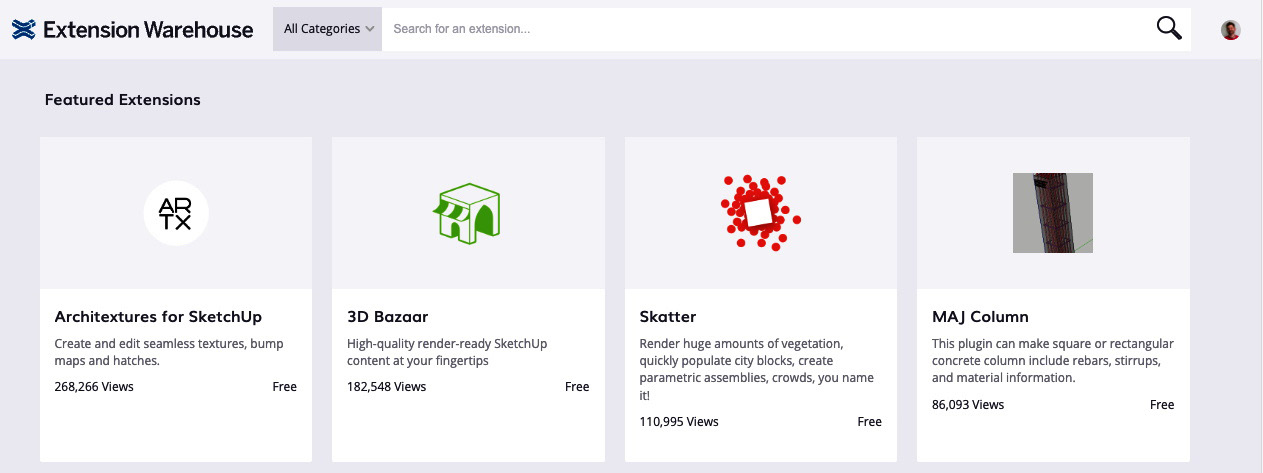
Figure 12.6 – Extension Warehouse’s simple, clean front page as seen in Google Chrome
Before we dive in too deep, I do want to mention the main differences in using Extension Warehouse through a browser as opposed to using it directly from within SketchUp. The good news is that the functionality is the same, so there is no need to learn how to use the site in two different ways. The biggest difference is with navigation and access that you have to browser tools.
In a browser, moving forward and backward through tools is easier and sometimes quicker. Additionally, you can open links in new tabs through a browser. This can be nice when you are searching for extensions. In one tab, you can search for an extension. You can then open the results one at a time in their own tabs. This allows for a quick and easy side-by-side comparison of extensions. Finally, if you see an extension that you like the look of but are not ready to download, you can always bookmark the page in a browser.
There are, of course, downsides as well. In a browser, when you find the extension that you want, you will need to download the file through your browser, and then install it the next time you are in SketchUp. If you are accessing Extension Warehouse from within SketchUp, downloading and installing the extension is all done in one step.
For now, let’s learn about Extension Warehouse through the browser interface. Let’s start by finding an extension that we know we want. Let’s find the listing page for the Bezier Curve Tool extension:
- Start by opening Extension Warehouse in your browser. Go to the https://extensions.sketchup.com page (you can just type extensions.sketchup.com into your browser to get here).
- Make sure you are signed in (follow the steps back in the Logging into the warehouses section if you need them). You will know that you are signed in because your logo will appear in the upper-right corner of the page.
- In the search bar at the top, type Bezier Curve Tool, then press Enter.
- You should see a list of a few extensions with one called exactly Bezier Curve Tool at the top. Your results should look similar to this:
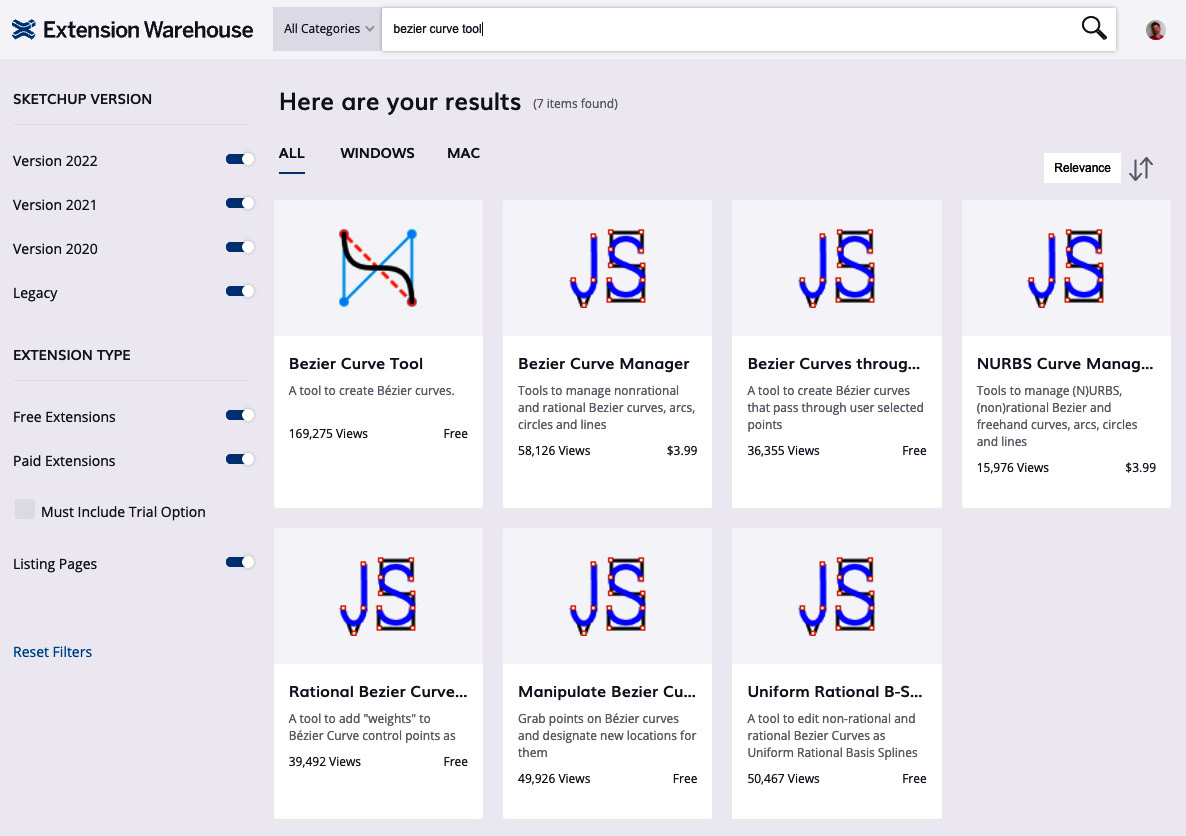
Figure 12.7 – Bezier Curve Tool search results
- Let’s take a look at the page for Bezier Curve Tool by clicking on it. You should see a page similar to this:
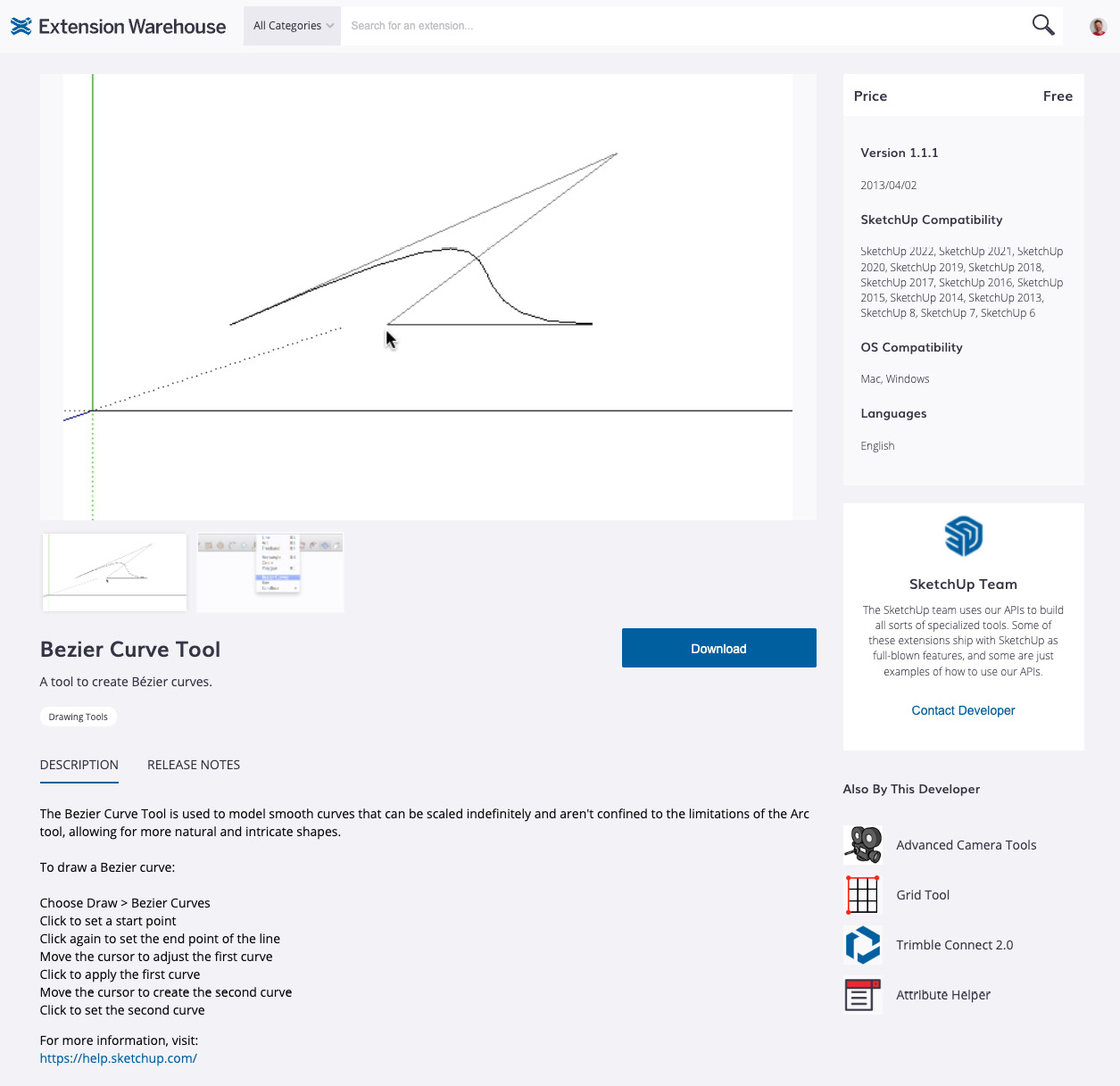
Figure 12.8 – Bezier Curve Tool page on Extension Warehouse
Notice that the page includes a wealth of information about this extension. It includes a few images or movies at the top of the page as well as a written description and release notes below. To the right are the specifics about the extension. Notice that this is a free extension, version 1.1.1, it was released on 2013/04/02 and supports every version of SketchUp back to version 6. This extension will run on Windows or macOS and is only available in English. Below that, we can see that this extension was published by the SketchUp team, and we get a list of other extensions by the author. Right in the middle of the page is a nice big Download button.
- Let’s download a copy of this extension by clicking on the Download button.
When you download this extension, you will save a file called su_bezier_1.1.1.rbz to your computer. You may remember that this was the sample extension that we used in Chapter 11, What Are Extensions?.
Know Your Download Location
To some of you, this may be obvious, but fairly regularly, I see users asking for help finding an extension or model they have downloaded and now want to use. Often, browsers will use a single location to download files (on both my Windows laptop and my MacBook, I download into a Download folder). Regardless of where the files end up, you will need to know where they are before you can use them!
Simple enough, right? If you are given a link to an extension or a name from another SketchUp user, it is a simple process to go and find it, pull up its page, and download it. Now, let’s go find an extension based on the functionality we know we want:
- Let’s get back to the main Extension Warehouse page by clicking on the Extension Warehouse logo in the upper left of the site.
- Let’s search for an extension that will allow us to bend geometry. Type bending into the search bar and press Enter. This will display something similar to these results:
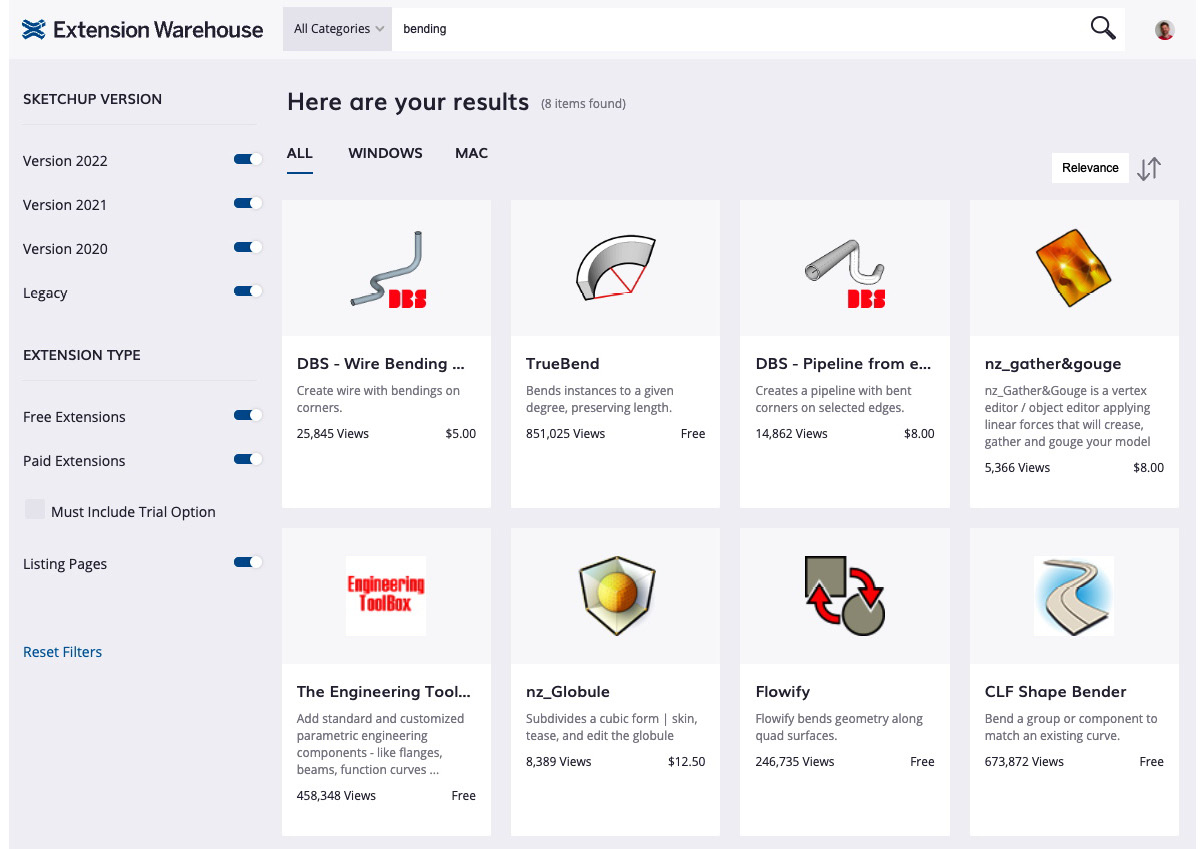
Figure 12.9 – Extensions related to the search term “bending”
Let’s narrow down these results using the filter options on the left side of the screen.
- At the top of the screen, you have the ability to toggle your operating system. Go ahead and click on WINDOWS or MAC as appropriate for your computer.
- Since we are running the most recent version of SketchUp, let’s toggle Legacy off under the SKETCHUP VERSION section of the page.
- We are not looking for a paid extension at this point, so let’s toggle Paid Extensions off under the EXTENSION TYPE section.
With that, we have narrowed our search result down to a single result:
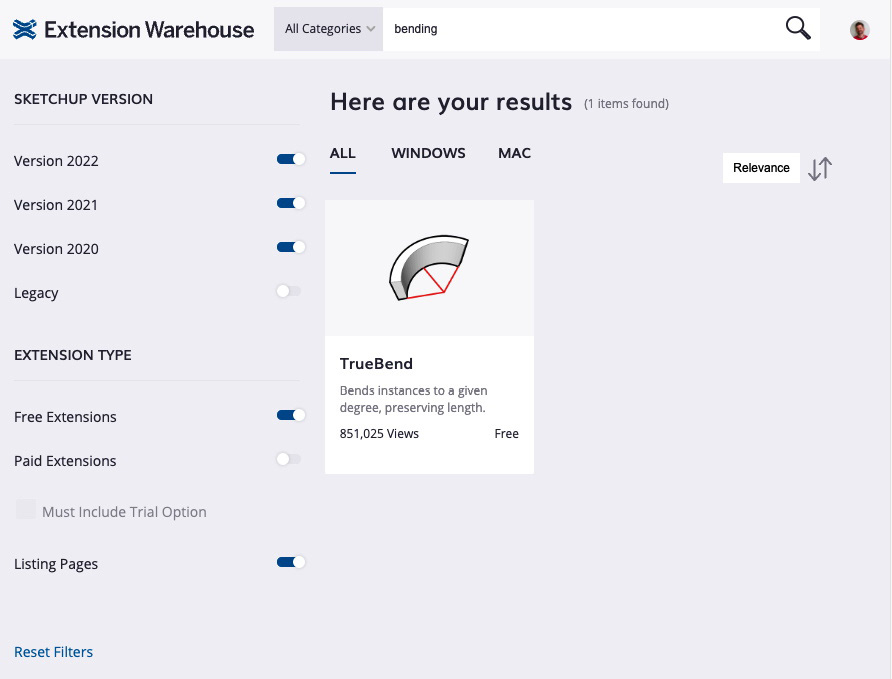
Figure 12.10 – A single result based on search criteria and filters
Though we did not need to use them, note that there are also options to include a trial version (if Paid Extension is toggled on) and an option to display listing pages. A listing page is a page for an extension that is not available for download from Extension Warehouse. These pages generally include the same information as hosted extensions but have a button that will take you to a third-party site for purchase or download.
Now that we found the extension that we want, let’s download it. This is one of the biggest differences between accessing Extension Warehouse in a browser and from inside SketchUp. From the browser, we need to download the extension and save it to your computer so that it can be installed (the same way we installed an extension in Chapter 11, What Are Extensions?):
- To download an extension, you must first bring up the page for the extension. From the search results page, click on the TrueBend extension card to show the TrueBend page:
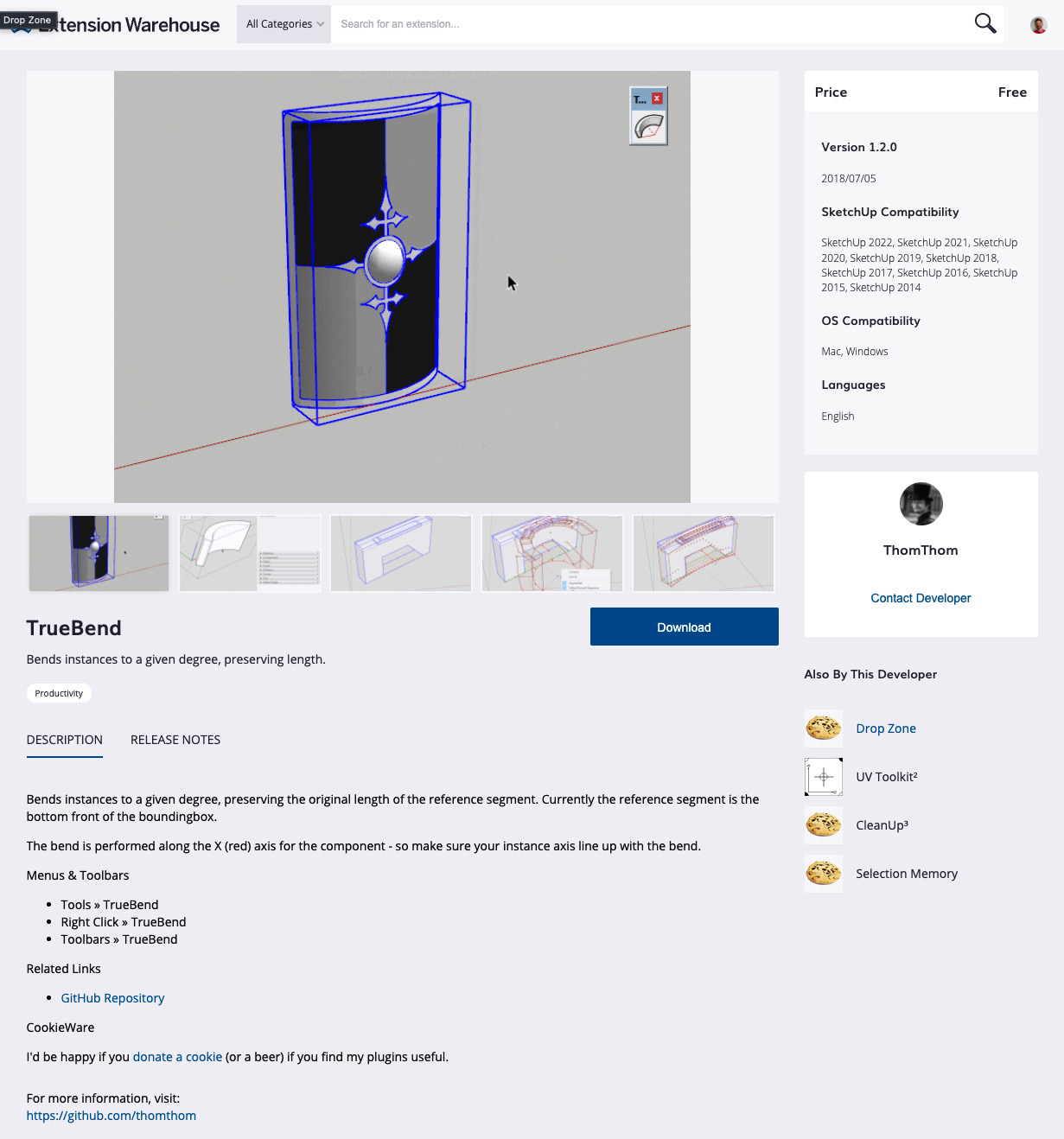
Figure 12.11 – TrueBend’s page on Extension Warehouse
- To download this extension, click the Download button.
- The extension will download to your preset download location, and a message will be displayed letting you know whether the download was successful:

Figure 12.12 – Success message after downloading an extension
Note that this popup does contain a link to a SketchUp Help Center article that contains step-by-step instructions on installing extensions if you ever need help installing in the future.
TrueBend
While you have seen the page for TrueBend at this point, I wanted to mention what this extension is and the utility it brings to SketchUp. TrueBend is a simple way to deform a selected group or component by bending it symmetrically around its center. At this point, if you have followed the instructions, you can find a copy of this extension in your Download folder. I would recommend installing it and trying it out. Worst case, you do not see a need for it in your workflow and can uninstall it (a process that we will cover later in this chapter as a part of the Extension Manager section).
From here, you can open SketchUp and install this extension following the steps listed in Chapter 11, What Are Extensions?. This is not a bad workflow and your best option if you want to keep a copy of the extension file (either to archive or perhaps install on a second computer).
Another option at this point if you would rather not actually download the extension (perhaps you are browsing on your phone) is to bookmark this page through your browser. This will allow you to return to this page later without actually having to download anything, a nice option to have if you see an extension that you may want to come back and try out in the future.
Accessing the Extension Warehouse from within SketchUp is very similar, but with a few differences (and one major advantage). Let’s switch over and find and install an extension from inside SketchUp, right now.
Extension Warehouse in SketchUp
When you click on the Extension Warehouse icon in SketchUp or choose Extension Warehouse from the Extensions menu, you will get access to the exact same site that you accessed through your browser. This can be nice, as you do not have to mess with switching to another program to look for extensions. Plus, though the Extension Warehouse window in SketchUp does not have all of the features of your browser, it does a good job of showing what you need to see while browsing for extensions:
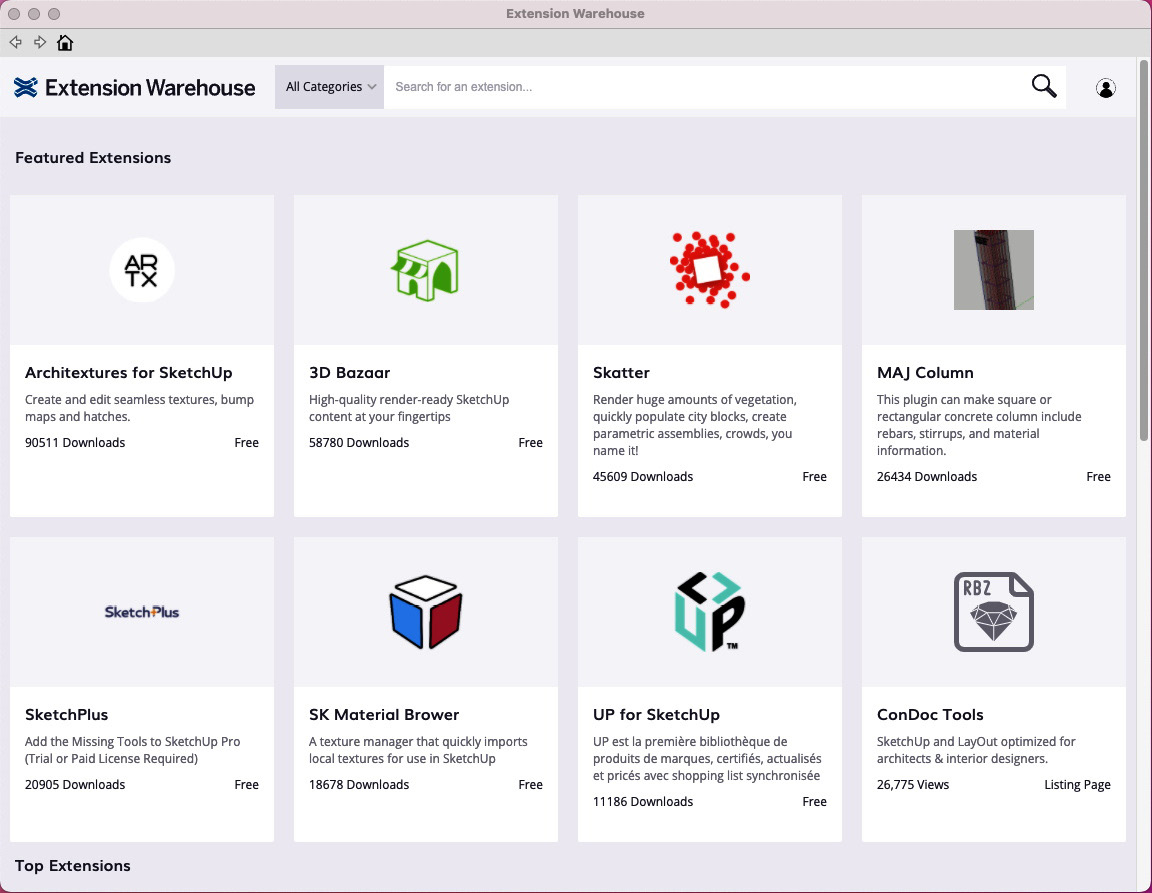
Figure 12.13 – Extension Warehouse as seen from inside SketchUp
Let’s find and install another simple extension. We want to find an extension that will allow you to push a single line into a face, just like the native tool Push/Pull allows you to pull a single face up into a 3D mass. Let’s open SketchUp and take a look:
- Open SketchUp and click open the Extension Warehouse window (either with the icon or through the Extension menu):

Figure 12.14 – The Extension Warehouse window can be accessed from the toolbar or menu
- Since we are not exactly sure of the name of the icon we are looking for, we can search for a single term and see whether we can track it down. Enter the term push into the Search field and press Enter:
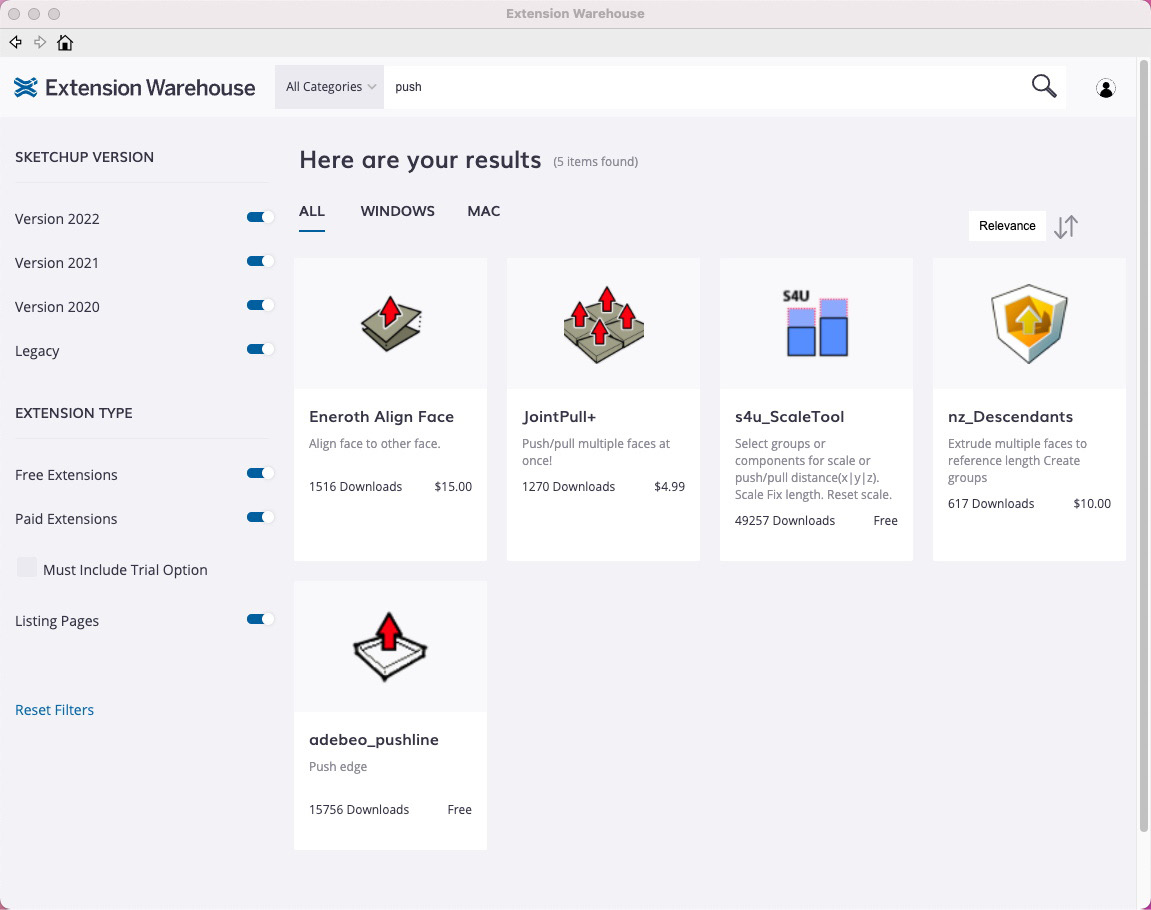
Figure 12.15 – Search results for the term “push”
This will return a few options that we can review and see whether we can find the extension that we are looking for.
- At this point, we have the option to simply read the short descriptions on the extension cards or click on an extension to see more information. Go ahead and click on a few of the cards to check out the extensions. Note that you can use the arrows at the very top left of the window to navigate forward and back through pages, just like in a web browser.
- After reviewing these options, it looks like adebeo_pushline is the extension that we are looking for. Click on that extension card to pull up the extension page:

Figure 12.16 – Extension page for adebeo_pushline
- Install this extension directly by clicking the Install button now.
That’s it! The extension skipped the download process and was automatically installed directly into SketchUp and is ready for use. In this case, because it is a simpler extension, you should find it available to you right away in your Extensions menu. Some extensions will require you to restart SketchUp. This will be true, regardless of the installation method.
adebeo_pushline
Again, this extension is a simple but useful tool that may help you in one or more of your workflows. If you followed the steps listed, you will have it installed and can give it a try. If you do decide to use it, that’s great! If you decide that you do not want it in SketchUp, follow the steps to uninstall an extension in the Extension Manager section of this chapter.
While there are advantages to both methods of browsing and installing extensions, I generally try to do so from within SketchUp. Being able to get an extension completely installed in a single click is a great option and saves me time! Regardless of your preferred method of getting extensions from Extension Warehouse, you will be able to take advantage of the My Downloads page, which we will explore next.
My Downloads
Whether you are logged in to Extension Warehouse through SketchUp or via a browser, you have the ability to view your My Downloads page. My Downloads is a list of every extension that you have installed or downloaded from Extension Warehouse while logged in with the current account (see information on Trimble ID in the Logging into the warehouses section of this chapter). This view (which can be sorted from newest to oldest or oldest to newest) allows you to click on the extensions you have previously used to return to their page on Extension Warehouse. If there is an extension that you want to remove from the list (say you tried an extension and did not like how it worked), you can click the X button on the right side to remove it from the page completely. This list will also give you information on paid extensions, including how much you paid, when you purchased, and, if applicable, when your subscription will expire.
This page is a great tool to use when you install new versions of SketchUp or migrate to a new computer. Rather than referencing what extensions are installed on an older version, you can scroll through My Downloads and redownload or install the extensions that you have used previously.
My Downloads is a great way to see the extensions you have used previously, but to manage the extension that you currently have installed, you will need to use Extension Manager.
Extension Manager
In addition to being the page that allows you to install extensions (as we saw in Chapter 11, What Are Extensions?), Extension Manager also shows a list of every extension that has been installed in SketchUp. Additionally, you can temporarily disable extensions or install updates from Extension Manager:
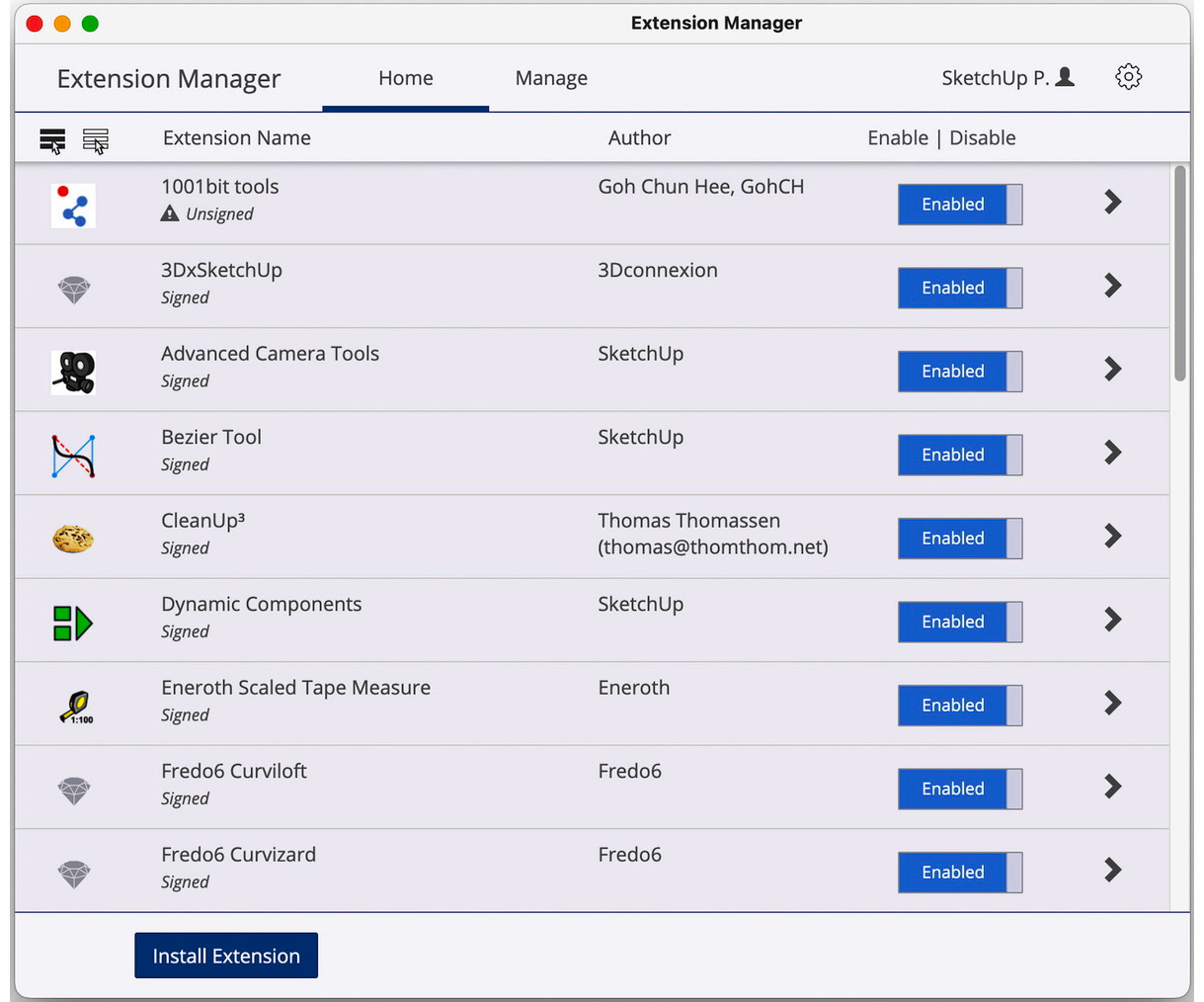
Figure 12.17 – Extensions Manager as seen on macOS
At the top of the Extension Manager window, you can switch between the Home and Manage tabs. The Home tab will display a list of all the extensions installed on this installation of SketchUp, including the icon, name, and author. To the far right is an arrow that will allow you to view additional details for an extension. Additional details will look similar to this:

Figure 12.18 – Extension information for Thomthom’s CleanUp3
This information includes things such as the version number and contact information for the author, as well as the extension signature status.
The only control on this tab is a toggle switch that allows you to enable or disable each individual extension. Toggling the switch to Disabled for an extension will turn off the extension until you enable it again using the same switch. Many extensions will disappear from SketchUp as soon as you click on this switch, while others may require you to restart SketchUp before they will disappear.
Why would you want to disable an extension? There are a few reasons. It is possible that one or more extensions conflict with each other. I mentioned back in Chapter 11, What Are Extensions?, that extensions reviewed before they are listed on Extension Warehouse will not conflict with each other, but it is possible that extensions downloaded from elsewhere may cause such issues.
Another reason that you may choose to disable extensions is to speed up SketchUp’s initial load time. In general, SketchUp starts up quickly. As you load more and more extensions, that initial startup time can get longer and longer. The simple fact is that the more extensions that need to get loaded, the longer it will take to start SketchUp. If you struggle with long startup times, you may try to disable extensions that you only use occasionally. If this helps, you can leave them disabled and only enable them when you need to use them.
The second tab at the top of the Extension Manager window is the Manage tab. This tab will display the same list of extensions, but replace the Enabled/Disabled switch with buttons for Update and Uninstall:
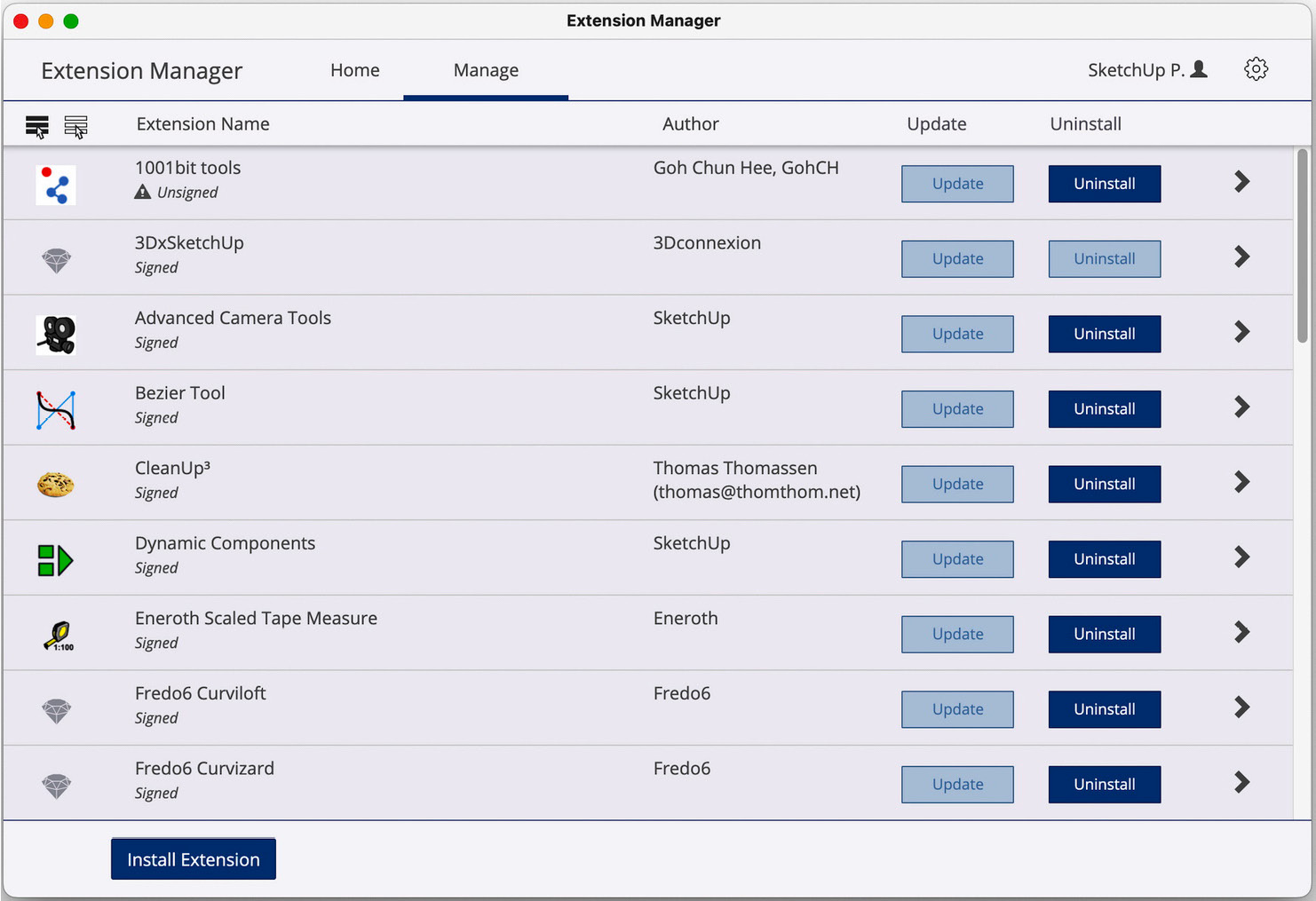
Figure 12.19 – The Manage tab in the Extension Manager window
When you install an extension through Extension Warehouse inside SketchUp, Extension Manager will keep track of the extension and let you know when a new version is available. In addition to displaying a popup when you first start SketchUp, the Update button will be enabled in the Extension Manager window. Clicking this button will automatically download and install the newest version of the extension. As with installing, some extensions may require you to restart SketchUp before they become available.
The Uninstall button is available for any extension that can be automatically uninstalled from within SketchUp. Clicking this button will display a confirmation popup before completely removing the extension from SketchUp:

Figure 12.20 – Uninstall confirmation popup as seen in macOS
As with installations, some uninstalls will require you to restart SketchUp before the extension disappears from SketchUp completely. An uninstalled extension will not be listed in Extension Manager but can be seen as part of the list of extensions on your My Downloads page in Extension Warehouse.
Occasionally, an extension may be installed by a third-party software and the Uninstall button may be disabled. These extensions cannot be removed from within Extension Manager and may have to be uninstalled by the software that installed them or manually removed.
Extension Warehouse is a big, amazing world with so many new SketchUp capabilities available to you. Being able to find, install, and manage extensions is a new skill that is sure to help you in your quest to level up! Extension Warehouse is, however, only one of the online repositories you will want to get used to using. The other is, of course, 3D Warehouse!
Finding things in 3D Warehouse
3D Warehouse is the largest web repository of its kind. Boasting around 4 million files available for download, 3D Warehouse is a huge asset to designers, allowing them to simply download and place models into their files rather than having to model everything from scratch.
There is a downside to 3D Warehouse. 3D Warehouse’s biggest asset is also its biggest problem. Since anyone can get an account and upload any SketchUp file, quality can vary greatly, resulting in some models that are great, and some models that are not so good. This means that to get the most out of 3D Warehouse, you will need to be savvy about how you search for and use the models you download.
I have, in the past, referred to 3D Warehouse as being like the Wild West. In the early years of 3D Warehouse, it was very easy for people to create whatever model they wanted, dump it there, and then leave. This ended up causing a lot of files that were of no value to end up sitting there, just taking up space. Fortunately, a lot more effort is being put into 3D Warehouse in recent years and it has made it a far more useful tool! From requiring sign-in to upload to expanding the search options, recent developments mean you will spend less time searching through uploads of slightly modified default scale figures and more time downloading and bookmarking useful models for your current or future project.
Just like Extension Warehouse, 3D Warehouse can be accessed through your web browser or from within SketchUp. There are a few differences between the two methods, so we will take a look at both right now.
Using 3D Warehouse in a web browser
Originally, 3D Warehouse was designed to be accessed as a web page. Navigating the pages and using the search tools feels very natural, and there are people out there who prefer to use 3D Warehouse from their favorite browser. The way that 3D Warehouse fills the browser window makes it much easier to browse:

Figure 12.21 – 3D Warehouse as seen from Chrome
As with Extension Warehouse, the big advantage of using 3D Warehouse in a browser is the browser itself. From the browser, you can navigate quicker, open links in new tabs, or bookmark items that interest you for access later. An additional advantage is that using 3D Warehouse through a browser allows you to download files for use outside of your current model. This may not seem that great right now (isn’t it better to download a file directly into your model?), but you will understand this advantage as you continue reading the chapter.
To get our feet wet in 3D Warehouse, let’s head there together and see whether we can’t find a nice couch (or sofa to some) to download and use in SketchUp:
- Open your browser and go to https://3dwarehouse.sketchup.com.
- In the search bar at the top, type couch and press Enter.
This will return a list with a lot of results. In fact, this will return over 1,000 results:
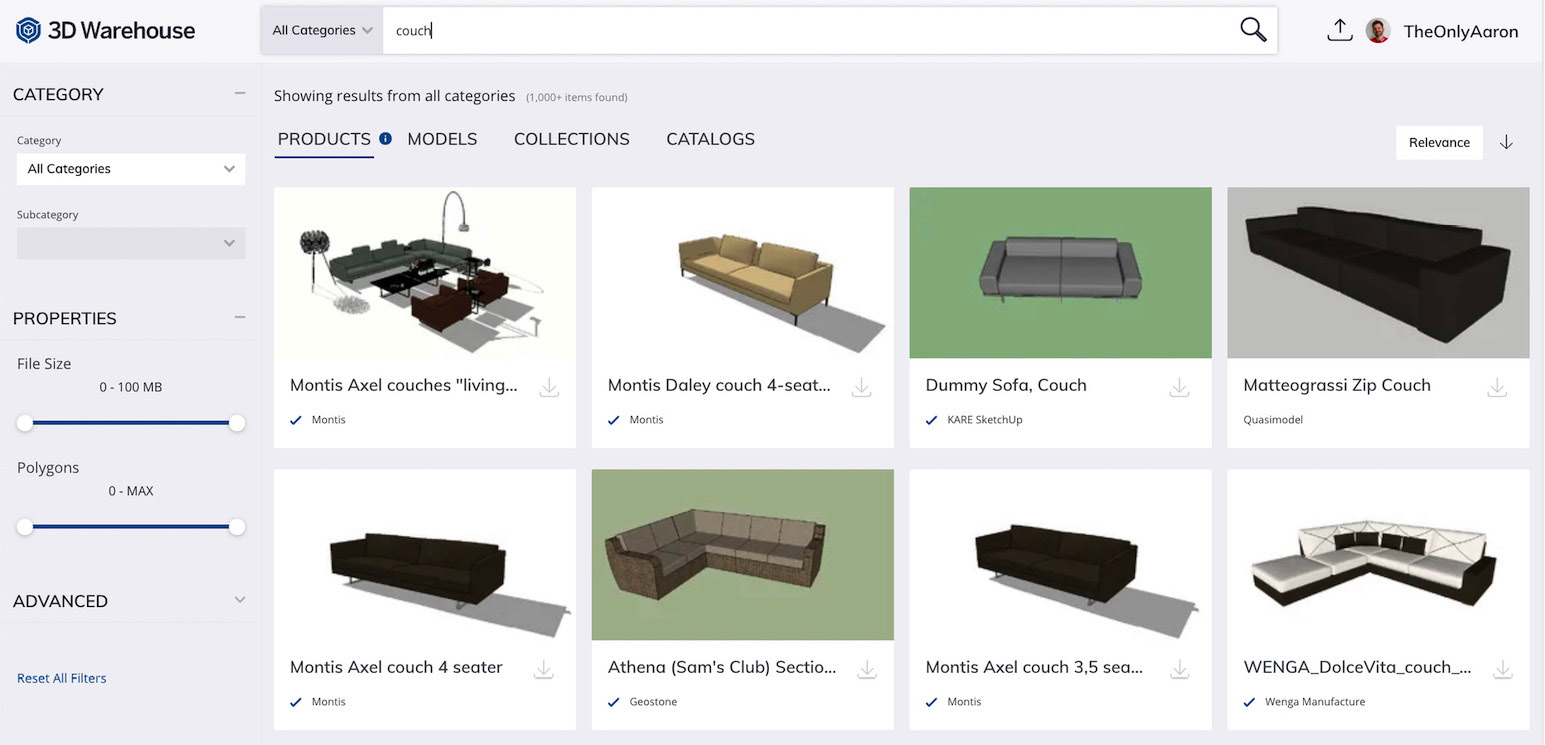
Figure 12.22 – Initial results for the “couch” search
Since 1,000+ results are too many to wade through, let’s try to narrow down this list by using some of the search filters on the left side of the window.
Products, Models, Collections, and Catalogs
Toward the top of the page, you have the option to sort results by products, models, collections, and catalogs. Products are models uploaded by the companies that manufacture or sell the items that the SketchUp models represent. Models are files uploaded by users that do not necessarily have any connection to the creator of the product. Collections are folders created by users to organize groups for models. Catalogs are groups of product models created by companies.
First, let’s start by limiting the search to furniture items only. I know, it seems odd, but when 3D Warehouse searches its database, any results with the searched term will come up as a result. This means someone’s description of a living room that says Living room with no couch or a delivery truck named Couch Brothers Deliveries will both end up on the list. We can eliminate these sorts of results by forcing 3D Warehouse to only look in a selected category.
- Click the Category dropdown and choose Furniture.
This likely reduced the list, but the results are still over 1,000. Let’s reduce it further by adding a subcategory.
- Click the Subcategory dropdown and choose Residential.
This reduced the results even more, but we need to filter even more. Let’s refine our search by dialing in the requirements of the file we are trying to find. To do this, we can set ranges on two properties: File Size and Polygons. While both of these properties are useful, it probably makes sense to only set one of them when searching.
I Prefer Polygons
Filtering results by file size and polygons will effectively narrow the search to show you files of a certain size. I prefer to use polygons when searching because it is a reflection of the geometry in the model only. File size can be bloated by things such as materials and components in the file, while the polygon count represents just the faces that make up the model.
- Slide the left handle below Polygons right to about 250, and the right handle to the left to around 750.
This filter will have a big impact on the number of results returned. At this point, you may have around 100 total results.
Advanced Search Options
Below the property search options is a section titled ADVANCED. This section contains additional search options. These options include controls to search for files based on their creator, title, or date. These options tend to be more useful when you are looking for a specific model, rather than in the case of a general search.
- Scroll through the results and click on a few models. Clicking on the card for a model will bring up a simple preview view of the model. This is one of the couches that was returned in my search:
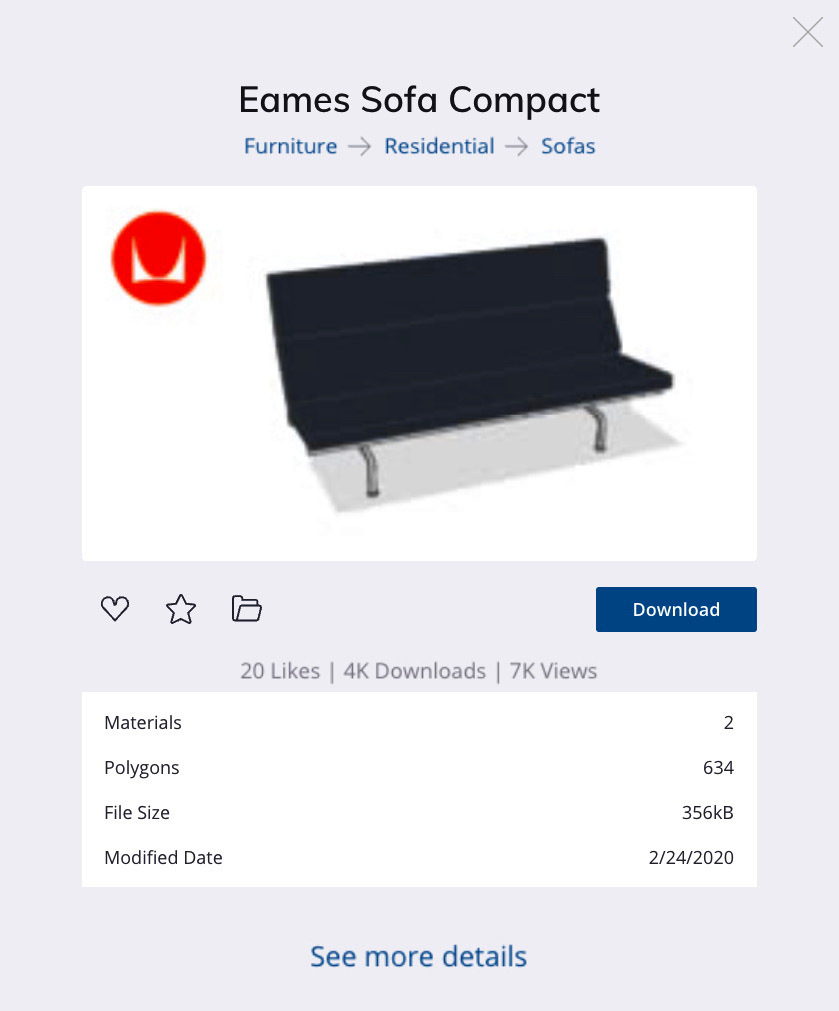
Figure 12.23 – Preview of a 3D Warehouse model
From this preview, you can see a larger thumbnail of the model and general information about the model. You also have the option to download the model or click See more details to bring up the full page for this model.
- Let’s take a better look at the model by clicking See more details. This will bring up the full-page view of this model:
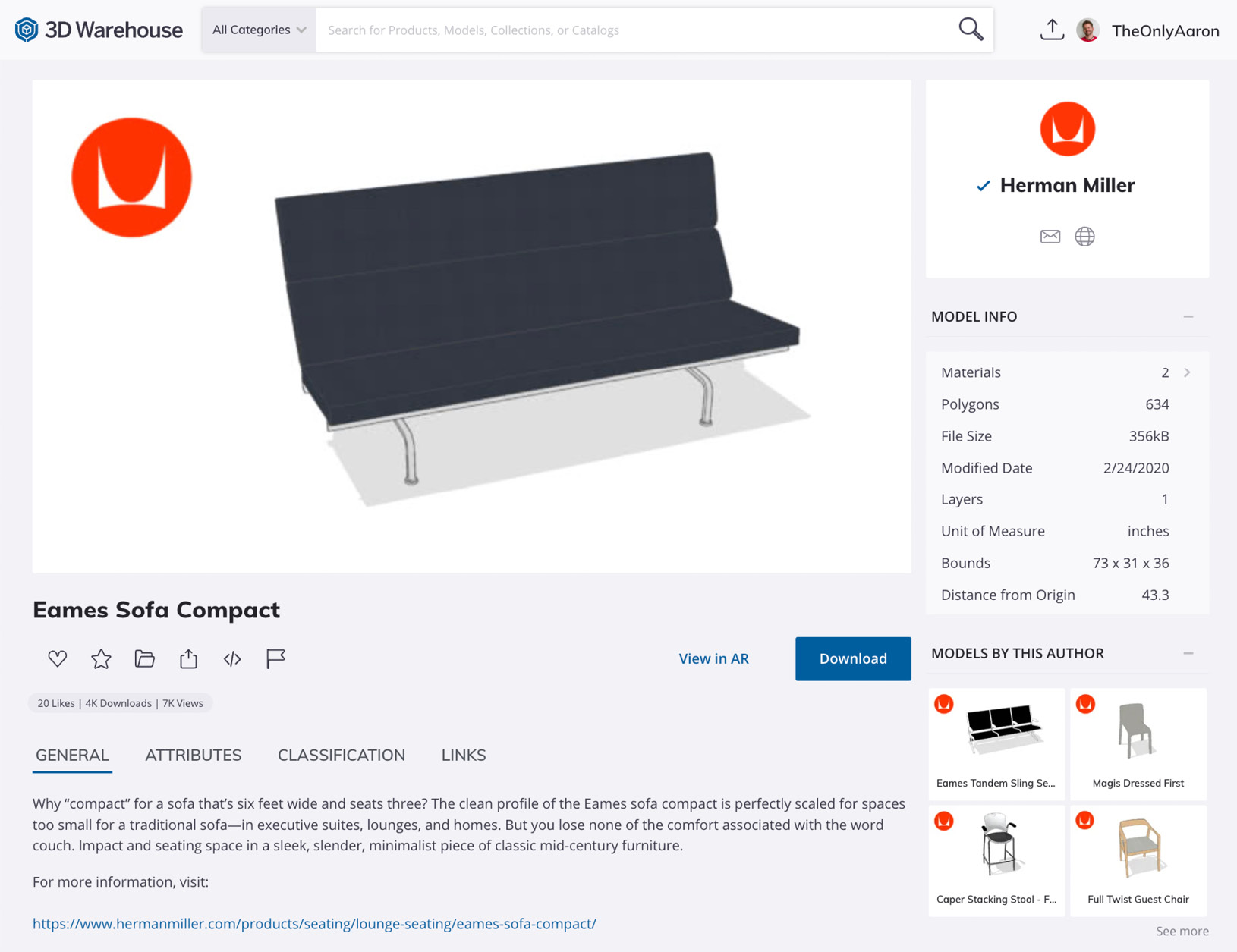
Figure 12.24 – Full page file from 3D Warehouse
The full page includes much more information about the model, the creator, and links to related models. Additionally, you can view models in Augmented Reality (AR) from this page. Let’s go ahead and download a file for use later in this chapter.
- Click the Download button on the page for the couch.
You will be prompted to select a version of the file to download. 3D Warehouse will offer to download to the previous two or three versions of SketchUp, as well as a GLB or Colada file. For this example, choose the version of SketchUp that matches your version of SketchUp Pro. With that, you have searched and downloaded a SketchUp model from 3D Warehouse. The next step from here is to import the downloaded model into SketchUp.
- Open SketchUp, start a new file, and choose Import… from the File menu.
- Navigate to your Downloads folder (or the location that you downloaded the file to in the previous steps) and select the couch file that you just downloaded.
SketchUp will return you to your current model and connect the origin of the file being imported to your cursor.
- Click in the model to place the couch.
As I mentioned earlier, I prefer to use 3D Warehouse from my browser. It can, however, be used from inside SketchUp, as well. While most (almost everything) of the interface is the same, the final steps of downloading and placing are much quicker. Let’s quickly run through that process in the next section.
Using 3D Warehouse in SketchUp
To access 3D Warehouse from inside SketchUp, you can click the icon on the toolbar or select 3D Warehouse from the Window menu:

Figure 12.25 – Access 3D Warehouse from the Window menu or the toolbar
The 3D Warehouse window inside SketchUp will give you the same access to search and view models as through the website. The big difference will appear when you are ready to download a model. When you click the Download button, rather than being prompted for the type of file to download, 3D Warehouse will ask whether you want to load the file directly into your current model:
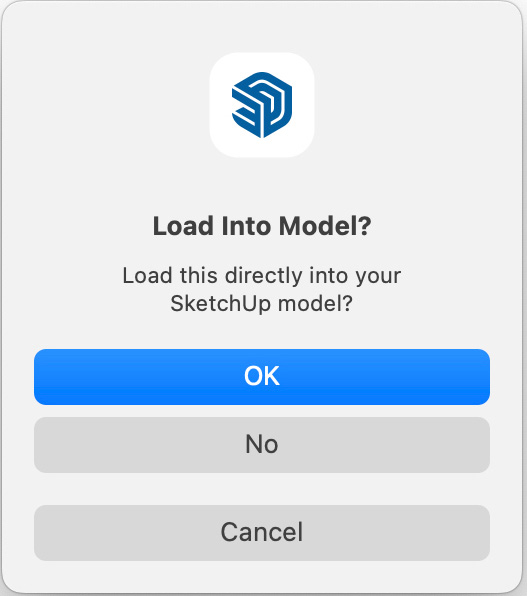
Figure 12.26 – Download options from 3D Warehouse inside SketchUp
Clicking the No button will prompt you to pick a location to download the file to. Clicking the OK button will return you to your model with the new file attached to your cursor. A single click will place the file into your current model.
Searching for and downloading models from 3D Warehouse is a great time saver, but only the beginning. A big difference between a novice and advanced user of 3D Warehouse is knowing how to examine the model and make sure it is what you want to use in your project. This is exactly what we will cover in the final section of this chapter.
Using 3D Warehouse models
Downloading a model from 3D Warehouse can save you a lot of time and energy. That can also add a lot of unwanted information and geometry to your model. This is the main reason that I always recommend downloading and reviewing a model before dropping it into your project. It is an extra step and can add a few minutes to your workflow, but it ends up saving you time when you compare it to having to deal with problems that can be introduced when placing bloated models into your work.
The process of reviewing and optimizing a SketchUp model could be its own chapter (or chapters), so we will have to use this section as a primer. I will run through the process of opening a model and list the top things to look for in your model. After that, we will look at a couple of options you have if you want to clean up a model. Of course, not every model is worth saving. Remember that there are millions of files available for download. So, if you start reviewing a model and find that it is going to be a lot of work to clean up, it might be the best plan to head back to 3D Warehouse and refresh your search!
Reviewing (and fixing) 3D Warehouse models
Remember back when I said that I preferred to search for models in my browser and download them? That’s because I prefer to review my models before I drop them into an active project. To do this, I open an empty file and import the model to be reviewed. I do not open the model in SketchUp. This is an intentional step and an important part of this process. Importing it into an empty model will make the new model behave the same way that it will if I import it into my actual project.
In the next subsections, we discuss the things that I try to look at once I have imported a file from 3D Warehouse.
Excessive geometry
The biggest cause of lag in SketchUp is too much geometry on the screen. The more geometry there is in a model, the harder SketchUp must work to show it on the screen. This tends to be an issue when people start downloading entourage or set dressing from 3D Warehouse. Many of the models available for download look beautiful but may not have been optimized to the level of detail that you need for your specific model.
I remember downloading a model of a bowl of fruit for a kitchen model I was working on. The entire model (without the fruit bowl) was a few thousand faces (according to the Model Info window). The bowl of fruit I downloaded had over one million faces. This little detail that I was hoping to add to my model was over four times as much geometry as the entire rest of the model!
There is not a hard number for what is a “good” amount of detail for an imported model, and the proper amount of detail will change depending on the part that the downloaded file plays in your project, but there is a quick way to see just how much geometry is in a model.
The first thing I do when reviewing a model is to turn on Hidden Geometry from the View menu. If the model I am looking at turns black with all the dashed lines on its surface, I will consider another file for my project or see whether I can reduce the geometry in the model.
Manually reducing geometry can be a long road that may include redrawing sections of the model altogether. If this is a process that you find yourself needing to do on a regular basis, you may want to take a look at an extension that will systematically reduce polygons, such as Skimp or Transmutr (more on both of these extensions in Chapter 13, Must-Have Extensions for Any Workflow).
Unnecessary nesting
Nesting is when a group or component is inside another group or component. In some cases, this can happen repeatedly to the point that the actual geometry that makes up a model is a dozen or more levels deep. This does not necessarily cause a problem in a model (it does not cause significant file bloat or performance issues) but it can make models difficult to work with.
Checking for nesting is simple. After importing your file into an empty model, open the Outliner window and look at how many levels there are to the model. Again, there is not a specific number of levels a file should have, but if you see the base geometry for a piece of furniture is 15 levels deep, know that you may want to look for another model or spend some time removing a few levels of nesting before importing into your project.
Too many tags
Tags are essential for organizing any model. The problem comes when the tags used to create a model end up in a larger project. For example, when modeling a car, you may end up with tags for the wheels, the frame, the glass, the interior, and more. In a SketchUp model for a car, it would make sense to have a dozen or more tags. When it comes time to import that car into a model of a garage, those tags are likely excessive. In fact, in a garage model, there probably only needs to be one tag that controls the visibility of the car.
To check tags in your imported model, just open the Tags window. When I am doing this level of review, I will often delete all tags, leaving everything on the Untagged tag. When I import the file into my working model, I will create one new tag for the item.
Extra components
When files are imported into a model, they are imported as a component. Any components that are already in the file show up as additional components in the model. This may include important components such as the pieces that make up a piece of furniture (maybe the feel and cushions of a chair are components), but a file may also include components that were created or imported when the file was being created. Remember, components imported into a SketchUp model are saved as a part of the file, even if they are not in the modeling window.
To check for extra components, just pull up the Components window and look through the list. If all the components listed appear in the model you are looking at, you are probably good. If you see a bunch of components for extra parts that are not part of what you are hoping to import, you may need to clean up the file before importing it into your working model. The easiest way to do this is to use the Purge Unused command (just like we did back in Chapter 2, Organizing Your 3D Model).
Lots of materials
Like components, models can accrue extra materials as they are being developed. This, too, is pretty easy to identify. After importing a model, open the Materials window and look at the materials listed for In Model. If the materials listed can be seen in the model you are looking at, you could be done. If your model appears to have four materials, but the Materials window shows a few dozen materials, you should clean it up before adding to your project. This, too, can be done by running the Purge Unused command.
Developing the skills and experience to find exactly what you need out of 3D Warehouse will take time and practice. Once you have done so, you will find 3D Warehouse an indispensable resource. Quickly downloading and placing models can knock hours off a project and help you to level up!
Summary
Hopefully, this overview of the warehouses was a step toward adding to your workflows. In this chapter, we discovered what the warehouses were and where they came from. We saw what a Trimble ID was and how (and why) to sign in. Finally, we learned to search, download, and use the content found in both warehouses. While many people take advantage of both 3D Warehouse and Extension Warehouse, you may find that you rely on one more than the other, and that is just fine, for now. Eventually, developing a way of working in SketchUp that relies on both extensions and downloaded 3D Warehouse content will allow you to go far beyond your current abilities and help to take you to the next level.
While we will not be spending more time in 3D Warehouse in this book, our next chapter, Chapter 13, Must-Have Extensions for Any Workflow, will have you exploring some specific extensions and, most likely, using your new Extension Warehouse and Extension Manager skills to download and install some of them!
